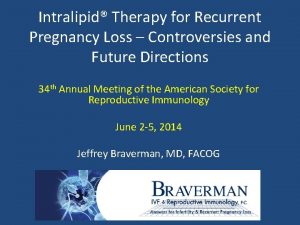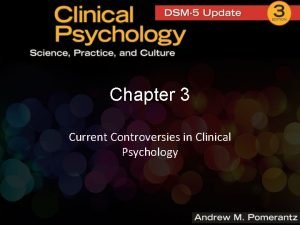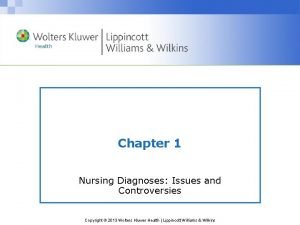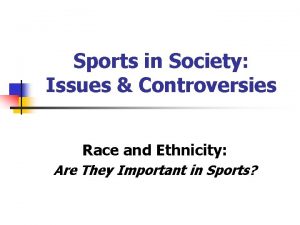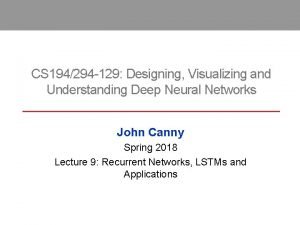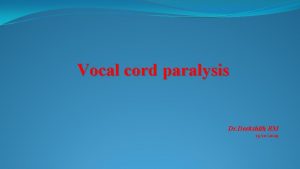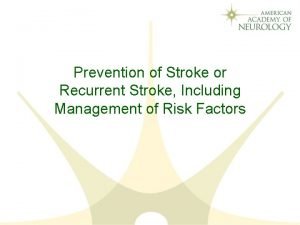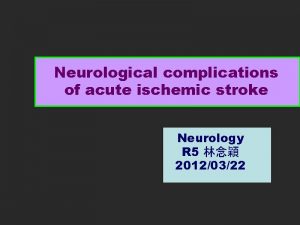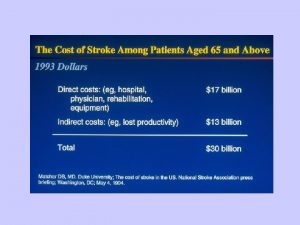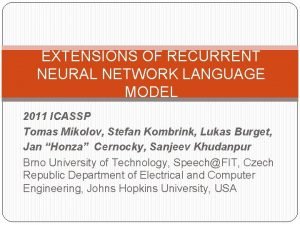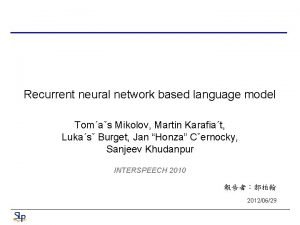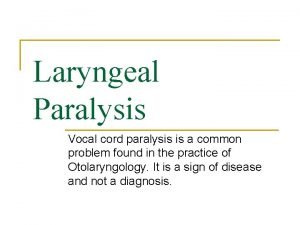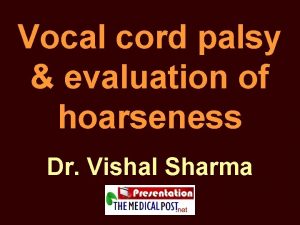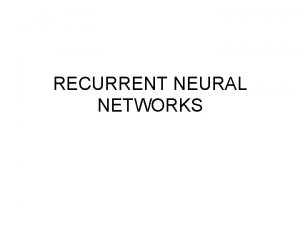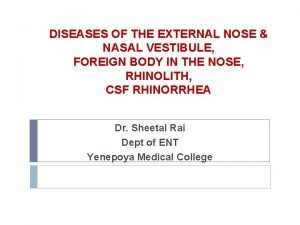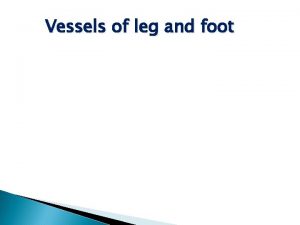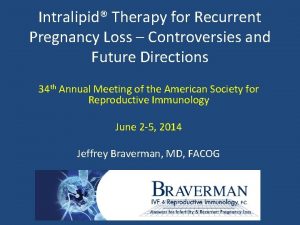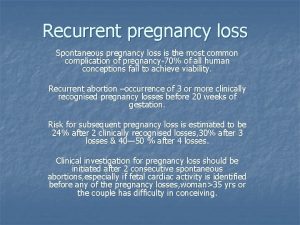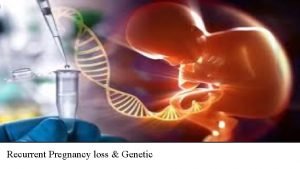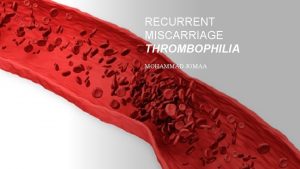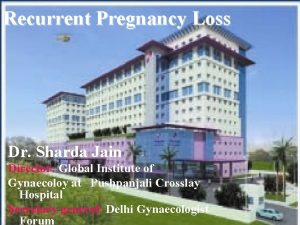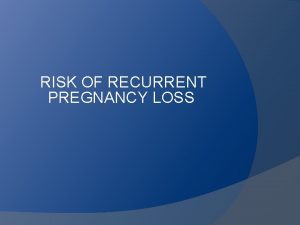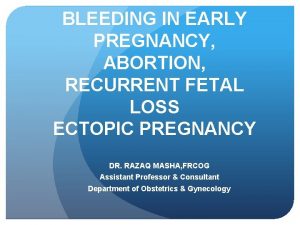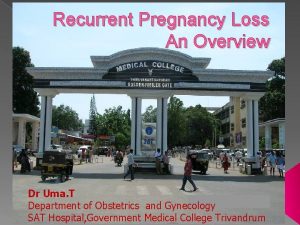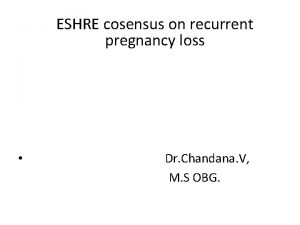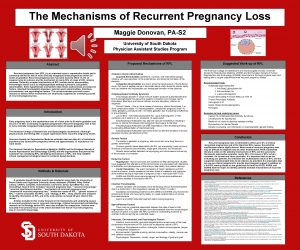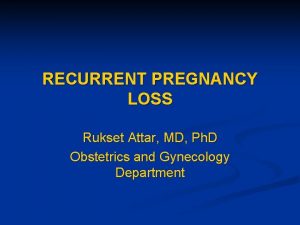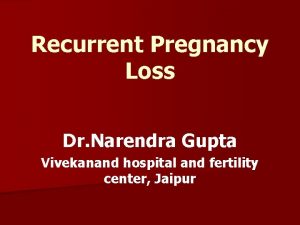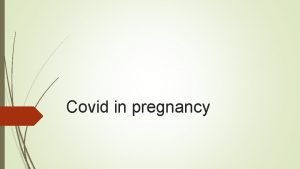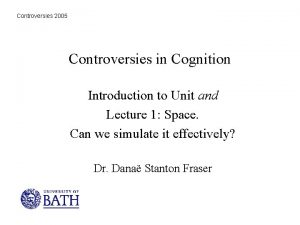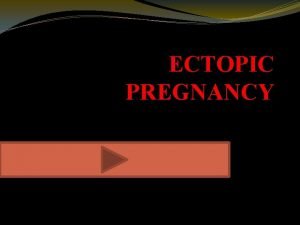Intralipid Therapy for Recurrent Pregnancy Loss Controversies and






































- Slides: 38

Intralipid® Therapy for Recurrent Pregnancy Loss – Controversies and Future Directions 34 th Annual Meeting of the American Society for Reproductive Immunology June 2 -5, 2014 Jeffrey Braverman, MD, FACOG

Intralipid® - What is it? • Fat emulsion containing soybean oil, glycerin and egg phospholipids – Egg phospholipids act as an emulsifier • Common component of parenteral nutrition in patients unable to tolerate an oral diet • Soybean oil lipid emulsion provided at triacylglycerol concentrations of 10%, 20%, or 30% (wt: vol) • 100 -500 nm droplets that simulate chylomicrons – Lipoproteins with triacylglycerol core and outer monolayer of phospholipids that transport dietary fatty acids in blood

Intralipid Metabolism • Degradation takes place at extrahepatic endothelial sites • Lipoprotein lipasemediated hydrolysis results in fatty acid (FA) release from triacylglycerides and reduction in size of emulsion remnant particles • Remnant particles taken up by liver resulting in intracellular delivery of FAs not released by lipoprotein lipasemediated hydrolysis

Fatty Acid Nomenclature • Defined by length - 2 -30 carbons in length – Short chain (SCFAs) = up to 4 carbons – Medium chain (MCFAs) = 6 -12 carbons – Long chain (LCFAs) = ≥ 14 carbons • Defined by saturation (presence of double bonds) - saturated, monounsaturated (MUFAs) and polyunsaturated (PUFAs) – Monounsaturated = 1 double bond – Polyunsaturated = 2 or more double bonds • Defined by position of double bond (for unsaturated FAs) - omega-3 (ω-3), omega-6 (ω-6), omega-9 (ω-9) – Refers to the position of the first double bond • Defined by availability through diet – Essential • Can only be obtained through diet – Non-essential • Can be produced from other FAs

Fatty Acid Composition of Intralipid • FAs in Intralipid® include linoleic (44 -62%), α-linolenic (4 -11%), oleic (19 -30%), palmitic (7 -14%) and stearic (1. 4 -5. 5%) acid – Linoleic acid is an ω-6 FA that is: • Essential • Long chain (18 carbon) • Polyunsaturated – α-linolenic acid is an ω-3 FA that is: • Essential • Long chain (18 carbon) • Polyunsaturated – Oleic acid is an ω-9 FA that is: • Nonessential • Long chain (18 carbon) – Palmitic acid is a FA that is: • Nonessential • Long chain (16 carbon) – Stearic acid is a FA that is: • Nonessential • Long chain (18 carbon) • Saturated

History of Intralipid • Initial use of fat emulsions for parenteral nutrition in the 1930 s – Initial preparations were composed of olive oil and milk – Linkage of malnutrition and post-operative mortality led to development of better fat emulsions with less risk • Intralipid developed in 1961 • Drug delivery of fat soluble drugs – Propofol – Etomidate • Treatment for overdose of fat soluble drugs – Verapamil toxicity

Early Evidence for Immunosuppressive Effects of Intralipid Infusion • Clinical observations in the 1980 s and early 1990 s showed increased risk of bacteremia in neonatal patients using lipid-based parenteral nutrition (Jarvis, 1983; Freeman, 1990; Goldmann, 1990) • IV lipids increased infection rates in surgical patients – Increased risk of infective complications noted in mildly malnourished surgical patients (Snydman, 1982) • Lower rates of graft versus host disease after bone marrow transplantation in patients using soybean oil-based parenteral nutrition (Muscaritoli, 1998) • Trial in 1991 to determine efficacy of trophoblast membrane vesicles for treating recurrent pregnancy loss found a greater success rate in women receiving the control which was Intralipid (Johnson, 1991) • Study in 1994 showed a significant Intralipid effect in preventing abortion in the abortogenic DBA/2 Jx. CBA/J mouse model (Clark, 1994)

NK Cells in Reproductive Immunology • Evidence that NK cell cytotoxic activity mediates recurrent pregnancy loss – Several studies show that peripheral NK cell cytotoxicity and NK cell numbers are increased in women with infertility, repeat implantation failure, recurrent pregnancy loss, and preeclampsia (Agarwal, 2006; Coulam, 2003; Fukui, 2008; King, 2010; Ntrivalas, 2001; Shakhar, 2003; Fukui, 2012; Sacks, 2012; Thum, 2004) – Some studies show increased release of granulysin from uterine NK cells in samples from spontaneous abortion

A Role for NK Cell Inhibition in the Immunosuppressive Mechanism of Intralipid? • Report in 2007 by Dr. Coulam’s group showed an ability of Intralipid to reduce NK cell cytotoxicity – in vitro at 18 and 9 mg/ml (Roussev, 2007) • Showed equal suppressive effect as IVIG and s. HLA-G • Report in 2008 by Dr. Coulam’s group showed in vivo suppression of NK cell cytotoxicity (Roussev, 2008) – Infusion of 2 -4 mls of 20% Intralipid (in vivo concentration was not directly measured) • Report in 2012 by Dr. Coulam’s group showed, in women with elevated NKa, equal effect of Intralipid and IVIG on live birth rate (Coulam, 2012) – Patients with “normal” NKa excluded – Patients positive for APAs excluded

Assessment of Uterine NK Cells • Studies showing relationship between elevated u. NK numbers and or activity with failed implantation or pregnancy related complications • Dr. Ledee’s group (also looked at effects on sub-endometrial angiogenesis) – Ledee-Bataille, 2005; Ledee, 2008; Ledee, 2011 • Lachapelle, 1996; Quenby, 2005; Giuliani, 2014; Russell, 2013 • Treatment with Intralipid • Assumption was made that u. NK cells will be suppressed by Intralipid similar to demonstrated effect on peripheral NK cells

Immunomodulatory Effects of Intralipid • Free fatty acids mechanism of action • Mechanisms appear related to mostly ω-6 (linoleic acid) and ω-3 (α-linolenic acid) – Many metabolites many avenues for modulation • PGE 2 (linoleic acid metabolite) – Inhibitor of NK activity – PGE 2 also stimulates inflammatory pathways • Metabalomic studies show even more possible modulatory effects • Immunometabolism another pathway for immunomodulation (may explain modulation of T cell activity) • Angiogenic properties of Intralipid (a new frontier of treatment? ) • How concentration significantly modifies Intralipid immunommodulation • Adverse effects of Intralipid and drug interactions • In vitro laboratory analysis of Intralipid efficacy

Regulation of Cellular Function by FAs • FAs incorporate into phospholipids in plasma membranes and alter membrane fluidity and organization of lipid rafts • Function as direct ligands for nuclear receptors – Peroxisome proliferator-activated receptors (PPARs) • Regulate gene expression • Function as ligands for G-protein-coupled receptors (GPCRs) – GPR 40, GPR 43, etc – Affects intracellular signaling pathways • Effects function of phospholipid-derived second messengers – PIP 2, DAG, etc affecting signaling pathways • Enzymatic conversion to bioactive lipid mediators (eicosanoids)

Immunomodulatory Effects of Intralipid • Free fatty acids mechanism of action • Mechanisms appear related to mostly ω-6 (linoleic acid) and ω-3 (α-linolenic acid) – Many metabolites many avenues for modulation • PGE 2 (linoleic acid metabolite) – Inhibitor of NK activity – PGE 2 also stimulates inflammatory pathways • Metabalomic studies show even more possible modulatory effects • Immunometabolism another pathway for immunomodulation (may explain modulation of T cell activity) • Angiogenic properties of Intralipid (a new frontier of treatment? ) • How concentration significantly modifies Intralipid immunommodulation • Adverse effects of Intralipid and drug interactions • In vitro laboratory analysis of Intralipid efficacy


Immunomodulatory Effects of Intralipid • Free fatty acids mechanism of action • Mechanisms appear related to mostly ω-6 (linoleic acid) and ω-3 (α-linolenic acid) – Many metabolites many avenues for modulation • PGE 2 (linoleic acid metabolite) – Inhibitor of NK activity – PGE 2 also stimulates inflammatory pathways • Metabalomic studies show even more possible modulatory effects • Immunometabolism another pathway for immunomodulation (may explain modulation of T cell activity) • Angiogenic properties of Intralipid (a new frontier of treatment? ) • How concentration significantly modifies Intralipid immunommodulation • Adverse effects of Intralipid and drug interactions • In vitro laboratory analysis of Intralipid efficacy

PGE 2 Inhibits NK Cell Activity • There are negative correlations between the levels of ω -6 PUFAs in serum and basal NK cell activity (Rasmussen, 1994) • Prostaglandin E 2 (PGE 2) is generated from AA through ω-6 PUFA metabolism – PGE 2 can suppress NK cell cytotoxicity (Juman 2013) • Downregulation of activating receptors NKG 2 D and 2 B 4 • Inhibition of IL-15 induced IFNγ production • PGE 2 can inhibit crosstalk between uterine NK cells and uterine dendritic cells (DCs) that are intimately associated in the endometrium(Bos, 2011) • Other studies showing regulation of NK cells by ω-3 PUFAs – May occur through activation of PPARγ

Inflammatory Effects of PGE 2

Immunomodulatory Effects of Intralipid • Free fatty acids mechanism of action • Mechanisms appear related to mostly ω-6 (linoleic acid) and ω-3 (α-linolenic acid) – Many metabolites many avenues for modulation • PGE 2 (linoleic acid metabolite) – Inhibitor of NK activity – PGE 2 also stimulates inflammatory pathways • Metabalomic studies show even more possible modulatory effects • Immunometabolism another pathway for immunomodulation (may explain modulation of T cell activity) • Angiogenic properties of Intralipid (a new frontier of treatment? ) • How concentration significantly modifies Intralipid immunommodulation • Adverse effects of Intralipid and drug interactions • In vitro laboratory analysis of Intralipid efficacy

Linoleic Acid Peroxide Metabolites May Play a Role in Immunosuppressive Effects of Intralipid • Unsaturated FAs can also undergo lipid oxidation to produce lipid peroxides and epoxides and their diols – Recent study of metabolome following Intralipid infusion found elevated levels of 12(13)-DHOME (isoleukotoxin diol) (Edwards, 2012) • PPARγ ligand with wide-ranging effects including immunosuppression

Immunomodulatory Effects of Intralipid • Free fatty acids mechanism of action • Mechanisms appear related to mostly ω-6 (linoleic acid) and ω-3 (α-linolenic acid) – Many metabolites many avenues for modulation • PGE 2 (linoleic acid metabolite) – Inhibitor of NK activity – PGE 2 also stimulates inflammatory pathways • Metabalomic studies show even more possible modulatory effects • Immunometabolism another pathway for immunomodulation (may explain modulation of T cell activity) • Angiogenic properties of Intralipid (a new frontier of treatment? ) • How concentration significantly modifies Intralipid immunommodulation • Adverse effects of Intralipid and drug interactions • In vitro laboratory analysis of Intralipid efficacy

Beyond NK Cells - Other Immunological Targets of Intralipid • Other immunological abnormalities are present in recurrent miscarriage patients • Reproductive autoimmune failure syndrome – “In analogy, to animal models, immunologic reproductive failure in humans, may therefore not be the consequence of specific autoantibody abnormalities or natural killer (NK)-cell abnormalities, but the reflection of a misdirection of a more broadly based immune response. ” (Gleicher, 2002)

A Role for Immunometabolic Regulation of T Cells by Intralipid • T cells play an important role in the response to a semi-allogenic fetus • Importance of regulatory T cells (Treg cells) to maintaining pregnancy in mammals is widely accepted • Detailed understanding of immunometabolism at the cellular level is emerging – Particularly relating to T cell activation and function

Metabolic Regulation of T Cell Activation • Resting T cells use a balanced “diet” of glucose and lipids for their metabolic fuel • Activation of effector T cells (Teff cells; CTL/Th 1/Th 2/Th 17) causes them to shift metabolism toward glycolysis and away from lipid oxidation

Fatty Acid Effects on Effector and Regulatory T Cells • Metabolic requirements of Treg cells recently investigated (Michalek, 2011) • Exogenous FAs promote Treg cell differentiation – May be due in part to regulation of cell survival as exogenous FAs caused a significant loss of viable Th 1, Th 2 and Th 17 cells

Immunological Tolerance – Hold the Sugar, Pass the Fat? • Metabolic requirement differences between Teff cells and Treg cells can be exploited therapeutically through the use of FAs and metformin – Metformin favors Treg cell differentiation during T cell activation

Immunomodulatory Effects of Intralipid • Free fatty acids mechanism of action • Mechanisms appear related to mostly ω-6 (linoleic acid) and ω-3 (α-linolenic acid) – Many metabolites many avenues for modulation • PGE 2 (linoleic acid metabolite) – Inhibitor of NK activity – PGE 2 also stimulates inflammatory pathways • Metabalomic studies show even more possible modulatory effects • Immunometabolism another pathway for immunomodulation (may explain modulation of T cell activity) • Angiogenic properties of Intralipid (a new frontier of treatment? ) • How concentration significantly modifies Intralipid immunommodulation • Adverse effects of Intralipid and drug interactions • In vitro laboratory analysis of Intralipid efficacy

Intralipid Effects on Vasculature • Failures of embryo implantation have been associated with abnormal angiogenesis/arteriogenesis – Dr. Moffett’s work on HLA-C/KIR interactions in regulating spiral artery remodeling – Dr. Ledee’s work showing abnormalities in uterine blood flow associated with altered uterine NK cell function • Abnormal vessel development leading to elevated uterine vascular resistance may be a target of Intralipid therapy • Intralipid effective at reversing pulmonary arterial hypertension in rats – Stimulation of angiogenesis, suppression of inflammation – Normalization of Doppler studies • Anecdotal evidence of normalization of abnormal umbilical Doppler studies in growth restricted pregnancies

Immunomodulatory Effects of Intralipid • Free fatty acids mechanism of action • Mechanisms appear related to mostly ω-6 (linoleic acid) and ω-3 (α-linolenic acid) – Many metabolites many avenues for modulation • PGE 2 (linoleic acid metabolite) – Inhibitor of NK activity – PGE 2 also stimulates inflammatory pathways • Metabalomic studies show even more possible modulatory effects • Immunometabolism another pathway for immunomodulation (may explain modulation of T cell activity) • Angiogenic properties of Intralipid (a new frontier of treatment? ) • How concentration significantly modifies Intralipid immunommodulation • Adverse effects of Intralipid and drug interactions • In vitro laboratory analysis of Intralipid efficacy

Concentration Dependent Immunosuppressive Effects of Intralipid • Evidence in the literature supports a strong association of soybean oil triglyceride concentration in the serum with immunosuppressive effects of Intralipid • Studies show 100 cc Intralipid – 2. 5 -20 mg/ml “in vivo” (Wanten, 2007) – NK cell cytotoxicity – low concentration in vitro (2. 5 mg/ml) (Coulam, Loo) – Production of Ig. G, Ig. M, and Ig. A (2. 5 -20 mg/ml) (Salo, 1997) – Decreased lymphocyte proliferation (2. 5 -10 mg/ml) – Antibody dependent cellular cytotoxicity (ADCC) (> 25 mg/ml) – Inhibition of chemotaxis (above 100 mg/ml) (Wiernek) • Concentration can be affected by – – Rate of infusion Preexisting triglyceride levels Presence of LPL polymorphisms Volume of Intralipid being transfused

Immunomodulatory Effects of Intralipid • Free fatty acids mechanism of action • Mechanisms appear related to mostly ω-6 (linoleic acid) and ω-3 (α-linolenic acid) – Many metabolites many avenues for modulation • PGE 2 (linoleic acid metabolite) – Inhibitor of NK activity – PGE 2 also stimulates inflammatory pathways • Metabalomic studies show even more possible modulatory effects • Immunometabolism another pathway for immunomodulation (may explain modulation of T cell activity) • Angiogenic properties of Intralipid (a new frontier of treatment? ) • How concentration significantly modifies Intralipid immunommodulation • Adverse effects of Intralipid and drug interactions • In vitro laboratory analysis of Intralipid efficacy

Drug Interactions and Potential Adverse Effects of Intralipid • • Potentiating infection Fatty acids do cross placenta and are found in the baby Allergy Splenomegaly Elevated liver enzymes Thrombocytopenia Lymphopenia Fatty overload syndrome – Highest risk patients are those with: • • Insulin resistance Obesity Diabetes LPL polymorphisms • May effect efficacy of fat soluble drugs – Vitamin D 3 • Some evidence that heparin and low molecular weight heparin may interfere with some immunological effects of Intralipid

Immunomodulatory Effects of Intralipid • Free fatty acids mechanism of action • Mechanisms appear related to mostly ω-6 (linoleic acid) and ω-3 (α-linolenic acid) – Many metabolites many avenues for modulation • PGE 2 (linoleic acid metabolite) – Inhibitor of NK activity – PGE 2 also stimulates inflammatory pathways • Metabalomic studies show even more possible modulatory effects • Immunometabolism another pathway for immunomodulation (may explain modulation of T cell activity) • Angiogenic properties of Intralipid (a new frontier of treatment? ) • How concentration significantly modifies Intralipid immunommodulation • Adverse effects of Intralipid and drug interactions • In vitro laboratory analysis of Intralipid efficacy

Is In Vitro Testing of Intralipid Effects Valid? • Intralipid does not get metabolized in vitro • Concentrations of 9 mg/ml and 18 mg/ml are higher than in vivo concentrations achieved by infusion of 2 -4 mls • Does not take into account effects on NK cell activity that result from secondary mediators formed in vivo (ie, cytokines, lipid mediators like eicosanoids, etc) • Some anatomical locations may not achieve Intralipid concentrations predicted by calculations – Lymph nodes

Our Data

Is Intralipid an Inexpensive Alternative to Intravenous Immunoglobulin (IVIG)? • Intralipid touted to public by many clinicians as inexpensive functional alternative to IVIG for treating recurrent pregnancy loss • Pooled Ig. G antibodies from the serum of thousands of donors • Demonstrated efficacy in treating immunologic abnormalities not thought to be corrected by Intralipid – Elevated intracellular cytokine ratios – Elevated serum cytokines – Elevated autoantibodies/alloantibodies

Future of Fat Emulsion Therapy • Using fat emulsions with alternative formulations – Alter the ω-3 to ω-6 ratio of the component PUFAs – Alter the chain length of the component fatty acids – ω-3 benefits not seen with ω-6 • Lower serum cytokines


Future Directions for Basic and Applied Research on Intralipid • Controlled trials of the effects of Intralipid infusion on miscarriage rates in women with RPL • Comparative studies on immunological properties of alternative fat emulsion formulations • Determine EFFECTIVE concentrations of Intralipid necessary to treat multiple immunological etiologies in RPL patients • Clarify relationship between u. NK and p. NK activity and the effect of IL on u. NK cell activity • Identify additional immunological biomarkers (other than NKa) to determine need for alternative or additional therapies • Study therapeutic role of Intralipid on angiogenesis in pregnancy • Study the effect of Intralipid in different autoimmune syndromes and genetic states (Grimble 2002, showed polymorphisms effect FA action) • Does or heparin or LMWH interfere with the immunosuppressive function of Intralipid? • Is there a place for oral administration (IV Intralipid developed for those that could not tolerate oral route)? There is abundant literature on this. • Study the effect of estrogen on lipid metabolism (many of the studies did not look at gender)
 Intralipid
Intralipid Molar pregnancy symptoms
Molar pregnancy symptoms Difference between normal loss and abnormal loss
Difference between normal loss and abnormal loss Sociology vs psychology
Sociology vs psychology In video
In video It is current controversies in clinical psychologist
It is current controversies in clinical psychologist Controversies in trade policy
Controversies in trade policy Controversies in nursing
Controversies in nursing Sports controversies
Sports controversies Sports controversies
Sports controversies Both psychoanalysis and humanistic therapy stress
Both psychoanalysis and humanistic therapy stress Bioness bits cost
Bioness bits cost Humanistic therapies aim to boost
Humanistic therapies aim to boost Visualizing and understanding recurrent networks
Visualizing and understanding recurrent networks Visualizing and understanding recurrent networks
Visualizing and understanding recurrent networks Paramedian vocal cord
Paramedian vocal cord Recurrent ulnar artery
Recurrent ulnar artery Vestibular fold vocal fold
Vestibular fold vocal fold Rnn andrew ng
Rnn andrew ng Recurrent stroke causes
Recurrent stroke causes Recurrent stroke causes
Recurrent stroke causes Artery of heubner
Artery of heubner Extensions of recurrent neural network language model
Extensions of recurrent neural network language model Cs 7643 github
Cs 7643 github Bert question generation
Bert question generation Pixel recurrent neural networks
Pixel recurrent neural networks Tomas mikolov
Tomas mikolov 5 elements of hair
5 elements of hair Recurrent laryngeal nerve
Recurrent laryngeal nerve Motif examples
Motif examples Part 135 recurrent training
Part 135 recurrent training Vocal cord paralysis causes
Vocal cord paralysis causes Beahr triangle
Beahr triangle Khepara
Khepara Recurrent nasal vestibulitis
Recurrent nasal vestibulitis Dorsalis pedis artery
Dorsalis pedis artery Rolo tracking
Rolo tracking Simple recurrent network
Simple recurrent network Picme2.0
Picme2.0
